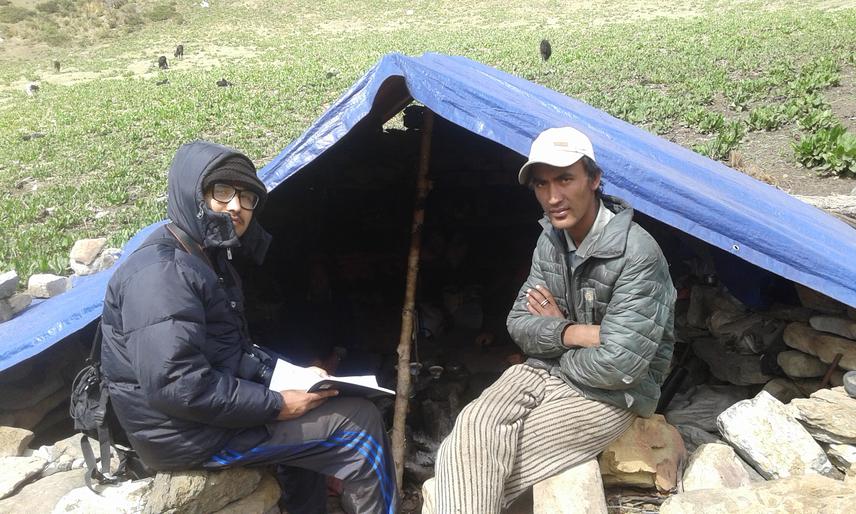Jibesh Kumar K.C.
This project is designed to find out scientific information on feeding ecology, habitats, distribution, and relative abundance of dhole and to conduct the conservation awareness programs for its conservation.

Getting information about dhole with herder
The Asiatic wild dog or dhole is notorious in livestock depredation but nationally protected wildlife species of Nepal. It is also included in endangered category in IUCN red data list and the population is in decreasing trend. Scientific and reliable information on dhole is lacking from Humla district of Nepal. In this scenario, this project is designed to find out scientific information on feeding ecology, habitat preference, distribution, and relative abundance of this species and to conduct the community based conservation awareness programs to assist the government of Nepal and other conservation partners for in-situ and ex-situ conservation of this species.
Geographically, Humla district lies between 290 35’ 00’’ to 300 70’ 00’’ north latitude and 810 18’ 00’’ to 820 10’ 00’’ east longitude in global map. It covers area of 5,655 km2. Its elevation ranges from 1,524 meter to 7,337 meter above the sea level. The region is rich in natural resources due to the altitudinal and climatic variation. Bio-physical survey and community awareness programs will be held in the region during the project. We will spend 80 days in field for biophysical data collection and community focused programs. Local staffs of District Forests Office (DFO) will be with us during same number of days. The colleagues of Kathmandu Forestry College will help us for 30 days during conservation awareness programs.
The project is designed for habitat survey, scat and hair sample collection, diet analysis, threat identification, distribution map preparation, data analysis, community awareness programs and will be ended with the preparation of final report in 1st April, 2017. This study will provide the baseline information about the species to government of Nepal (DFO and Department of Forests) and other conservation partners which will be really beneficial for conservation of this species, associated habitats and overall biodiversity in the region.